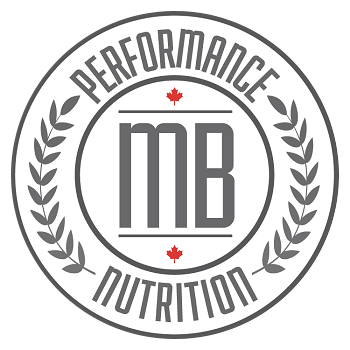Last updated on January 11th, 2024
You may have heard that antioxidants can help reduce your recovery time after strenuous exercise. You know the stiffness, swelling, pain, fatigue and reduced strength that your muscles experience after a good workout.
And antioxidants can help!
Well, some of them can.
Today I’m going to dive into some of the science, but I also want to note that more research is needed.
In this article, we’ll go over how the muscles get “oxidative stress” in the first place, and what “antioxidants” actually are.
Then we’ll look at some of the research on the effects of both antioxidant supplements and antioxidant foods on muscle recovery.
And lastly, when is the best time to get those antioxidants for maximal impact.
FIRST OFF – WHY DO MUSCLES GET SORE AFTER A WORKOUT?
Even if you haven’t heard of it, you know about EIMD (exercise-induced muscle damage). This is an “official” term to describe the stiffness, swelling, pain, fatigue and reduced strength that can follow one, two, or even up to five days after a tough workout.
With EIMD symptoms, strength can decline by up to 40-50%, and this can significantly reduce performance for days, or even weeks afterwards!
This is because, at a microscopic level, after a good workout, there is damage to the muscle cells; and so the body’s natural repair mechanisms kick into gear. They bring fluid and immune cells to help fix those muscle cells so they can start rebuilding. This causes inflammation and oxidative stress that show up as the symptoms of EIMD.
After a workout, the inflammation actually helps to repair the muscle, so this inflammation is exactly what is needed so that the muscle can rebuild a bit stronger than it was before.
In fact, this is what makes muscle recovery time critical.
So, as you can see, we don’t want to eliminate the symptoms and recovery time, we just want to reduce them, so we can get back to training again.
And, of course, exercise is just one of many things that cause oxidative stress and inflammation within the body.
BACK TO BASICS – WHAT EXACTLY IS AN ANTIOXIDANT?
“Oxidation” is a natural chemical process.
It’s why some fruit goes brown once it’s cut.
Have you ever squeezed lemon juice onto a sliced avocado? The vitamin C in the lemon juice can help prevent it from browning too quickly. That makes the vitamin C an “antioxidant”.
Some of the well-known antioxidants are actually essential nutrients, like vitamins C, and E, for example. There are also other types of antioxidants that are not vitamins. Some of these are phytochemicals (phyto=plant) in your fruits and vegetables, especially brightly-coloured plants.
And, as you know, fruits and vegetables are great for overall health and to reduce the risk of many chronic diseases. One of the reasons why they’re so healthy is because of their nutrients and phytochemicals.
Browning avocados aside, oxidation is a natural and healthy process within our bodies. It is essential for many normal processes, like when our white blood cells try to kill invading bacteria and to help repair muscle cells after a workout.
As with everything in our bodies, processes work best when kept in balance.
So, the problem of oxidation is not the fact that it occurs, but only when there is too much of it, and the oxidation vs. antioxidation balance is thrown off.
And that is what is known as “oxidative stress”.
HOW CAN ANTIOXIDANTS REDUCE MY RECOVERY TIME?
So now you know that you want your muscles to go through the natural processes of inflammation and oxidation in order for them to recover properly; and therefore, a balanced amount of oxidation and inflammation is your friend.
You don’t want to completely eliminate the oxidative stress that is part of EIMD, you just want to help your body re-balance itself quicker to speed up the recovery process.
Here’s where antioxidants can help!
CAN ANTIOXIDANT SUPPLEMENTS HELP WITH EIMD?
You may have heard (or tried) taking antioxidant supplements like vitamins C or E. But what is the scientific evidence that this works to reduce muscle recovery time?
On one hand, vitamin supplements can be a good source of nutrients, as long as you take them as directed (i.e. don’t go overboard on them because more is not always better).
On the other hand, there is conflicting evidence as to whether supplementing with vitamin C actually helps with EIMD. Some studies show benefit, some show no effect, while others show longer recovery times.
In terms of vitamin E, one review of many studies showed that high doses of vitamin E supplementation may even increase the risk of death
Even though both vitamins C and E are in fact essential vitamins that are also antioxidants, the science of supplementing with them for EIMD does not show much evidence that they help with muscle recovery. And some research suggests they may be detrimental at high doses.
What about non-vitamin antioxidant supplements?
Several clinical studies of flavonoid (non-vitamin antioxidants) supplements like quercetin and resveratrol showed no improvements in muscle recovery.
In terms of antioxidant supplements in general, just like with antioxidant vitamin supplements, they just don’t seem to have held up to scientific scrutiny.
CAN ANTIOXIDANT FOODS/DRINKS HELP WITH EIMD?
Antioxidant foods and drinks, on the other hand, are a different story!
Many studies show that eating a variety of antioxidant-rich fruits and vegetables contributes to overall health much more than taking isolated nutrients in a supplement.
Some of the richest sources of antioxidant fruits include brightly-coloured plants. Blueberries, for example, have a high antioxidant ability (known as “ORAC – oxygen radical absorption capacity”), not because of their vitamins, but because they contain a lot of phytochemicals (phyto=plant) like “anthocyanins”, amongst others. Or even tart cherry juice, pomegranate, or black currant nectar.
In fact, some antioxidant benefits of fruit juices seem to go above and beyond the amount of vitamin C they contain. So, it’s not just about the vitamins!
A few studies have shown improved muscle recovery after drinking tart cherry juice. Benefits include speeding recovery time, reducing inflammation and loss of muscle strength, as well as reducing pain after distance running.
Blueberries and black currant nectar have also been shown to speed muscle recovery and/or reduce muscle damage and inflammation.
So, the antioxidant-containing foods that seem to help reduce EIMD symptoms are berries, cherries, currants and their juices.
WHEN SHOULD I EAT/DRINK ANTIOXIDANTS TO REDUCE MY RECOVERY TIME?
We know that the antioxidant status of the blood can increase within one hour of eating wild blueberries.
So, when should we ingest our antioxidants to help reduce muscle recovery time?
Most of the studies that showed benefits had people eat or drink their fruits for 4-7 days before their exercise, as well as on the day of. Some even had participants continue for several days afterwards.
One review recommends daily consumption of tart cherries for faster recovery from EIMD.
Blueberries have been shown to speed muscle recovery when eaten both before AND after strenuous exercise.
The bottom line is that you can have your antioxidant fruits/juices for days before and after you exercise. Even consider making them a regular part of your daily diet.
SUMMARY
- Exercise-induced muscle damage, EIMD is an “official” term to describe the stiffness, swelling, pain and fatigue and reduced strength that can follow one, two, or even up to five days after a tough workout.
- After a workout, the inflammation actually helps to repair the muscle, so it is exactly what is needed so that the muscle can rebuild a bit stronger than it was before. So, the goal is not to eliminate the symptoms and recovery time, just to reduce it.
- Antioxidant supplements don’t seem to have much beneficial effect and can be harmful in large doses.
- There are some good studies on using blueberries, tart cherry juice and black currant nectar for their help with muscle recovery.
- When it comes to reducing recovery time, most of the research has shown a benefit when eating or drinking these fruit and/or juices for several days before, as well as the day of, and even after strenuous exercise. Feel free to have them daily.
- More studies are being done, so keep your eye out for updates in this area.
References:
Close GL, Ashton T, Cable T, Doran D, Holloway C, McArdle F, MacLaren DP. Ascorbic acid supplementation does not attenuate post-exercise muscle soreness following muscle-damaging exercise but may delay the recovery process. Br J Nutr. 2006 May;95(5):976-81. LINK: https://www.ncbi.nlm.nih.gov/pubmed/16611389
Connolly DA, Lauzon C, Agnew J, Dunn M, Reed B. The effects of vitamin C supplementation on symptoms of delayed onset muscle soreness. J Sports Med Phys Fitness. 2006 Sep;46(3):462-7. LINK: https://www.ncbi.nlm.nih.gov/pubmed/16998453
Dragsted LO, Pedersen A, Hermetter A, Basu S, Hansen M, Haren GR, Kall M, Breinholt V, Castenmiller JJ, Stagsted J, Jakobsen J, Skibsted L, Rasmussen SE, Loft S, Sandström B. The 6-a-day study: effects of fruit and vegetables on markers of oxidative stress and antioxidative defense in healthy nonsmokers. Am J Clin Nutr. 2004 Jun;79(6):1060-72. LINK: http://ajcn.nutrition.org/content/79/6/1060.long
Guarnieri S, Riso P, Porrini M. Orange juice vs vitamin C: effect on hydrogen peroxide-induced DNA damage in mononuclear blood cells. Br J Nutr. 2007 Apr;97(4):639-43. LINK: https://www.ncbi.nlm.nih.gov/pubmed/17349075
Hutchison AT, Flieller EB, Dillon KJ, Leverett BD. Black Currant Nectar Reduces Muscle Damage and Inflammation Following a Bout of High-Intensity Eccentric Contractions. J Diet Suppl. 2016;13(1):1-15. doi: 10.3109/19390211.2014.952864. Epub 2014 Aug 25. LINK: https://www.ncbi.nlm.nih.gov/pubmed/25153307
Islam MA, Alam F, Solayman M, Khalil MI, Kamal MA, Gan SH. Dietary Phytochemicals: Natural Swords Combating Inflammation and Oxidation-Mediated Degenerative Diseases. Oxid Med Cell Longev. 2016;2016:5137431. Epub 2016 Sep 19. LINK: https://www.hindawi.com/journals/omcl/2016/5137431/
Kay CD, Holub BJ. The effect of wild blueberry (Vaccinium angustifolium) consumption on postprandial serum antioxidant status in human subjects. Br J Nutr. 2002 Oct;88(4):389-98. LINK: https://www.ncbi.nlm.nih.gov/pubmed/12323088
Keul KS, Perrier ET, Elliot DL, Chesnutt JC. Efficacy of tart cherry juice in reducing muscle pain during running: a randomized controlled trial. J Int Soc Sports Nutr.2010, 7: 17 (7 May 2010). LINK: http://jissn.biomedcentral.com/articles/10.1186/1550-2783-7-17
Laupheimer MW, Perry M, Benton S, Malliaras P, Maffulli N. Resveratrol exerts no effect on inflammatory response and delayed onset muscle soreness after a marathon in male athletes.: A randomised, double-blind, placebo-controlled pilot feasibility study. Transl Med UniSa. 2014 Apr 8;10:38-42. eCollection 2014. LINK: https://www.ncbi.nlm.nih.gov/pmc/articles/PMC4140428/
McLeay, Y, & Barnes, MJ, Mundel, T, Hurst, SM, Hurst, RD, Stannard, SR. Effect of New Zealand blueberry consumption on recovery from eccentric exercise-induced muscle damage. J Int Soc Sports Nutr.2012, 9: 19 (7 May 2012). LINK: https://www.ncbi.nlm.nih.gov/pmc/articles/PMC3583121/
Miller ER 3rd, Pastor-Barriuso R, Dalal D, Riemersma RA, Appel LJ, Guallar E. Meta-analysis: high-dosage vitamin E supplementation may increase all-cause mortality. Ann Intern Med. 2005 Jan 4;142(1):37-46. Epub 2004 Nov 10. LINK: https://www.ncbi.nlm.nih.gov/pubmed/15537682
Rabello de Lima CL, Oliveira Assumpção C, Prestes J, Sérgio Denadai B. CONSUMPTION OF CHERRIES AS A STRATEGY TO ATTENUATE EXERCISE-INDUCED MUSCLE DAMAGE AND INFLAMMATION IN HUMANS. Nutr Hosp. 2015 Nov 1;32(5):1885-93. Doi: 10.3305/nh.2015.32.5.9709. LINK: http://www.aulamedica.es/nh/pdf/9709.pdf
Sousa M, Teixeira VH, Soares J. Dietary strategies to recover from exercise-induced muscle damage. Int J Food Sci Nutr. 2014 Mar;65(2):151-63. doi: 10.3109/09637486.2013.849662. Epub 2013 Nov 4. LINK: https://www.researchgate.net/publication/258248692_Dietary_strategies_to_recover_from_exercise-induced_muscle_damage


